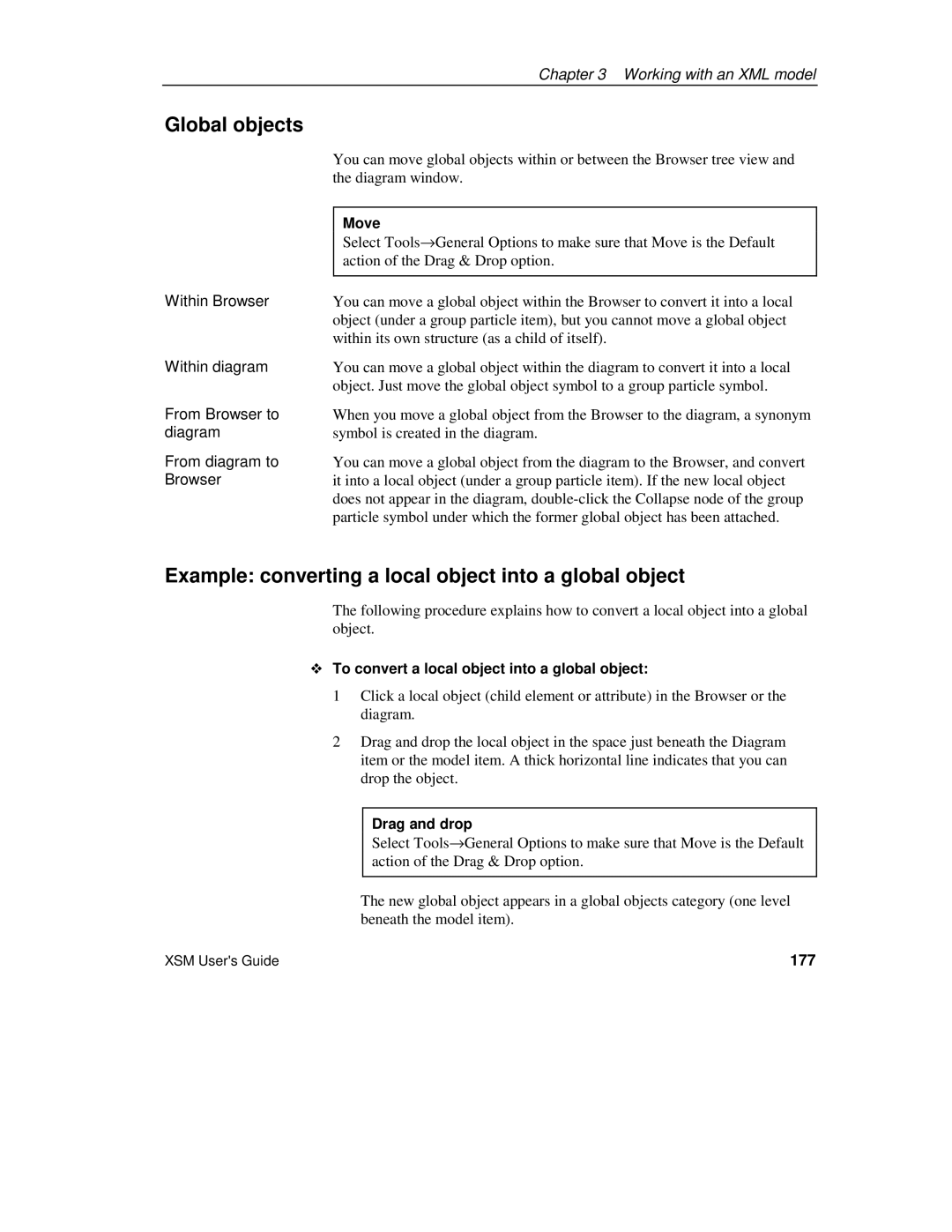
Chapter 3 Working with an XML model
Global objects
| You can move global objects within or between the Browser tree view and |
| the diagram window. |
|
|
| Move |
| Select Tools→General Options to make sure that Move is the Default |
| action of the Drag & Drop option. |
Within Browser |
|
You can move a global object within the Browser to convert it into a local | |
| object (under a group particle item), but you cannot move a global object |
| within its own structure (as a child of itself). |
Within diagram | You can move a global object within the diagram to convert it into a local |
| object. Just move the global object symbol to a group particle symbol. |
From Browser to | When you move a global object from the Browser to the diagram, a synonym |
diagram | symbol is created in the diagram. |
From diagram to | You can move a global object from the diagram to the Browser, and convert |
Browser | it into a local object (under a group particle item). If the new local object |
| does not appear in the diagram, |
| particle symbol under which the former global object has been attached. |
Example: converting a local object into a global object
The following procedure explains how to convert a local object into a global object.
To convert a local object into a global object:
1Click a local object (child element or attribute) in the Browser or the diagram.
2Drag and drop the local object in the space just beneath the Diagram item or the model item. A thick horizontal line indicates that you can drop the object.
Drag and drop
Select Tools→General Options to make sure that Move is the Default action of the Drag & Drop option.
The new global object appears in a global objects category (one level beneath the model item).
XSM User's Guide | 177 |
